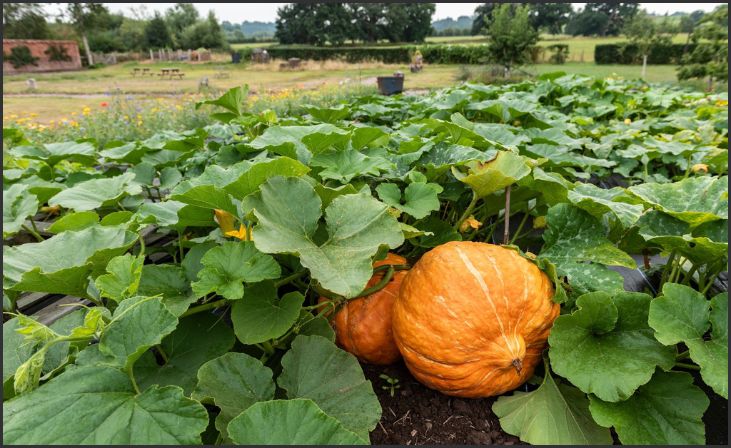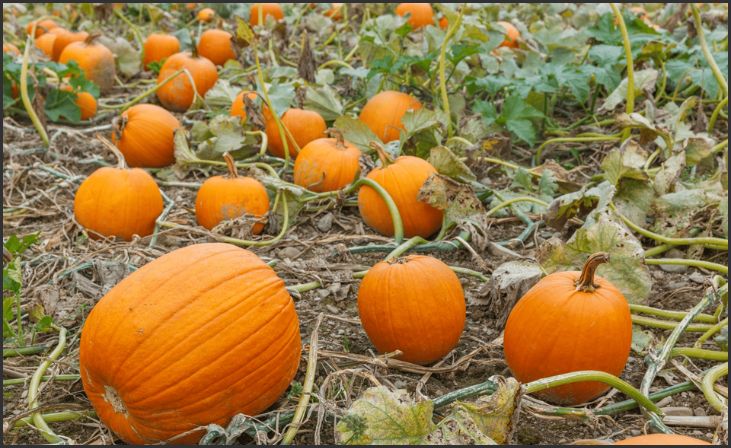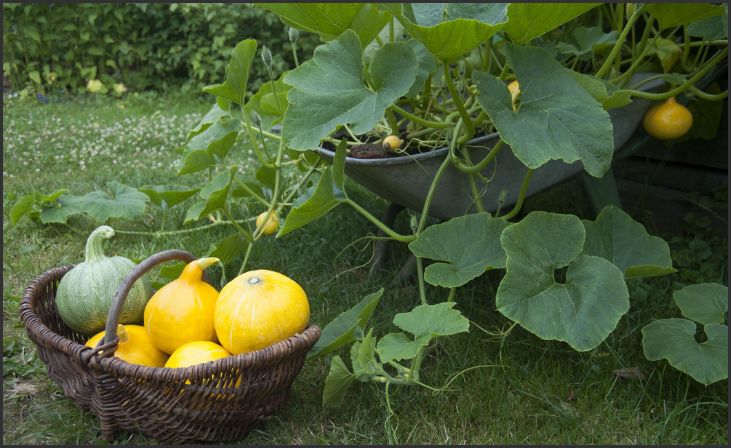In the realm of small backyard gardening, cultivating pumpkins can be a rewarding endeavor, offering a plethora of benefits ranging from fresh, homegrown produce to the joy of nurturing vibrant vines within limited space.
This guide aims to provide a comprehensive outline for successful pumpkin cultivation, catering specifically to small gardens. Selecting the right pumpkin variety, optimal location, and strategic planning are essential components.
From seed germination to harvesting and beyond, we delve into key considerations, including soil preparation, maintenance practices, and troubleshooting common issues.
As we embark on this journey, the beauty lies not only in the harvest but in the sustainable, hands-on experience that transforms small spaces into flourishing pumpkin patches.
Whether for culinary delights or festive decorations, cultivating pumpkins in your backyard adds a touch of nature’s bounty to your daily life.
Importance of small backyard gardens
Small backyard gardens play a pivotal role in promoting sustainable and healthy living. These compact green spaces offer a myriad of benefits, contributing to both individual well-being and environmental stewardship.
- Fresh and Nutrient-Rich Produce: Small gardens enable individuals to grow their own fruits, vegetables, and herbs. This results in access to fresh, locally sourced produce that is often more nutrient-rich compared to store-bought counterparts.
- Reduced Environmental Impact: By cultivating plants at home, individuals reduce the need for long-distance transportation and excessive packaging associated with commercial produce. This, in turn, minimizes the carbon footprint and supports a more sustainable food system.
- Educational Opportunities: Small gardens serve as hands-on classrooms, fostering a deeper understanding of plant life cycles, ecosystems, and the importance of biodiversity. They provide a practical platform for learning about sustainable gardening practices and environmental stewardship.
- Therapeutic and Stress-Relieving: Gardening has been proven to have therapeutic benefits, offering a meditative and stress-relieving activity. Small backyard gardens provide a sanctuary for relaxation, fostering a deeper connection with nature and promoting mental well-being.
- Community Building: Sharing surplus produce with neighbors or participating in community gardening initiatives enhances social bonds and a sense of community. Small gardens become focal points for shared experiences and collaborative efforts.
- Aesthetic Enhancement: Cultivating flowers, ornamental plants, and landscaping features in small gardens contributes to the visual appeal of neighborhoods. This not only enhances the living environment but also boosts property values.
- Resource Efficiency: Small-scale gardening encourages resource-conscious practices, such as composting, rainwater harvesting, and the use of organic fertilizers. These practices contribute to resource efficiency and a more sustainable use of water and nutrients.
Also, Read – Pumpkin-Based Natural Remedies for Digestive Health
Pumpkin cultivation in small backyard gardens
Choose the Right Pumpkin Variety

Opt for compact or dwarf pumpkin varieties suitable for small spaces, such as “Jack-Be-Little,” “Baby Boo,” or “Small Sugar.” These varieties exhibit a more restrained growth habit, making them ideal for confined backyard gardens.
Additionally, consider bush-type pumpkins like “Bushkin” or “Honey Bear” known for their compact size and space-saving characteristics.
Choosing smaller varieties not only ensures a successful harvest in limited space but also allows for creative use in culinary endeavors and decorations. Check seed packets or consult with local nurseries to find pumpkin varieties specifically designed for small gardens.
Select a Suitable Location
Select a sunny location in your backyard that receives 6-8 hours of direct sunlight daily. Ensure good air circulation to reduce the risk of diseases. Choose an area with well-drained soil, as pumpkins prefer soil that doesn’t retain excessive water.
If your soil tends to be heavy or clayey, consider amending it with organic matter like compost to improve drainage. Additionally, choose a spot with enough space for the vines to spread or plan for vertical growth using supports like trellises.
Proper site selection is crucial for the success of your pumpkin cultivation, promoting healthy plant development and a bountiful harvest in a small backyard garden.
Prepare the Soil
Prepare well-drained, fertile soil for optimal pumpkin growth in your small backyard garden. Start by testing the soil pH, aiming for a slightly acidic to neutral range (around 6.0-7.0). Incorporate organic matter, such as compost, to enhance soil structure and fertility.
Work the compost into the soil to a depth of 12-18 inches, promoting aeration and water drainage. This step ensures that the soil is rich in nutrients, promoting robust pumpkin development.
Consider using raised beds or containers for better soil control and to maximize space. Adequate soil preparation lays the foundation for a successful pumpkin harvest in your confined gardening space.
Planting
Plant pumpkin seeds directly in your small backyard garden after the last frost, following the guidelines on the seed packet. Space seeds according to the recommended distance, typically 2-4 feet apart for compact varieties.
Plant them at a depth of 1 to 1.5 inches in well-prepared, nutrient-rich soil. Consider using raised beds or containers for efficient space utilization. Ensure the chosen location receives at least 6-8 hours of sunlight daily.
Water the seeds consistently, keeping the soil evenly moist during the germination period. As the vines grow, provide support with trellises or cages to save space and encourage upward growth. Successful planting sets the stage for a flourishing pumpkin crop in your limited garden space.
Also, Read – Picking the Perfect Pumpkin Varieties
Watering
Maintain consistent moisture for your small backyard pumpkin garden. Water deeply and regularly, providing about 1-2 inches of water per week, adjusting based on weather conditions. Focus on early morning watering to minimize fungal issues, as wet foliage overnight can lead to diseases.
Use a soaker hose or drip irrigation to deliver water directly to the soil and avoid wetting the leaves. Mulch around the plants to retain soil moisture, suppress weeds, and regulate temperature.
Monitor soil moisture levels by checking the top inch of soil regularly. Adequate and mindful watering ensures the health and productivity of your pumpkins in a confined garden space.
Fertilizing

Fertilize your small backyard pumpkin garden to promote healthy growth. Before planting, incorporate a balanced, all-purpose fertilizer into the soil based on package instructions. As the vines start spreading, apply a second round of fertilizer to support ongoing development.
Consider using a slow-release fertilizer to provide nutrients gradually throughout the growing season. Monitor your plants for signs of nutrient deficiencies, adjusting fertilization accordingly.
Avoid over-fertilizing, as excessive nitrogen can lead to excessive foliage growth at the expense of fruit development. Well-timed and balanced fertilization contributes to a robust pumpkin harvest within the constraints of a limited garden space.
Support and Space Management
Maximize space in your small backyard by employing vertical gardening techniques for pumpkins. Train vines to grow vertically using trellises or sturdy supports, reducing their horizontal spread. For sprawling varieties, use raised beds or containers to control growth.
Support developing pumpkins with slings or fabric to prevent stress on vines and potential damage. Implementing these space-saving strategies not only optimizes your garden layout but also minimizes the risk of diseases by improving air circulation.
Efficient support and space management ensure a productive pumpkin harvest in confined gardening spaces.
Pest and Disease Management
Mitigate pests and diseases in your small backyard pumpkin garden by regularly inspecting plants for issues. Handpick pests like aphids or cucumber beetles, and use insecticidal soap if necessary. Introduce beneficial insects like ladybugs to control aphids naturally.
Apply organic mulch to suppress weeds and minimize soil-borne diseases. Promote air circulation by spacing plants appropriately, reducing the risk of fungal infections. If signs of disease appear, promptly remove affected foliage and treat with fungicides if needed.
By practicing vigilant monitoring and employing natural remedies, you can effectively manage pests and diseases, ensuring a healthy pumpkin crop in your limited garden space.
Harvesting
Harvest your small backyard pumpkins when they reach the desired size and color. Check for a hard stem and resistance to puncture as indicators of ripeness. Use pruning shears to cut pumpkins from the vine, leaving a few inches of stem attached.
Harvest before the first frost to prevent damage. Store harvested pumpkins in a cool, dry place with good ventilation, extending their shelf life.
Enjoy the fruits of your labor by incorporating pumpkins into recipes, carving for decorations, or preserving for future use. Timely and careful harvesting ensures a successful and rewarding experience in your confined garden space.
Preservation
Preserve your small backyard pumpkin harvest for future use by storing them in a cool, dry place. Choose pumpkins with intact skins and store them on shelves or in well-ventilated areas. Avoid stacking pumpkins to prevent bruising or damage.
Alternatively, you can process pumpkins by pureeing and freezing in airtight containers, ensuring long-term usability in recipes.
Another preservation method is canning; pumpkin can be pressure-canned or prepared as pumpkin butter. These techniques extend the shelf life of your harvest, allowing you to enjoy the flavors of your small garden throughout the seasons.
Rotate Crops

Practice crop rotation in your small backyard garden to maintain soil health and prevent diseases. Avoid planting pumpkins in the same spot each year, as this can deplete specific nutrients and increase the risk of soil-borne pathogens. Rotate pumpkins with unrelated crops to break pest and disease cycles.
For example, consider planting legumes or leafy greens in the pumpkin’s previous location. Crop rotation promotes balanced soil fertility, minimizes the likelihood of pest and disease buildup, and enhances the overall sustainability of your garden.
Plan your garden layout strategically each season, ensuring a thriving and diverse ecosystem in your limited gardening space.
Conclusion
In the tapestry of sustainable living, small backyard gardens weave a story of resilience, connecting individuals to the Earth while fostering health, community, and environmental stewardship. These compact green spaces, teeming with life, not only provide fresh, nutrient-rich produce but also nurture a deeper understanding of nature’s cycles.
As sanctuaries of well-being and hubs for community collaboration, small gardens showcase the profound impact that cultivating a bit of earth can have on personal, social, and ecological levels. In their modest scale, these gardens echo a resounding call to embrace a greener, more sustainable future.
FAQs
Pumpkins thrive in full sunlight, requiring at least 6-8 hours of direct sunlight daily. Choose a sunny location for optimal growth and fruit development.
Yes, certain smaller pumpkin varieties can be successfully grown in containers. Ensure the container is large enough, has proper drainage, and use quality soil.
Implement strategic pruning to control vine growth. Regularly trim excess foliage and redirect the vines to keep them within the designated space.

Leave a Reply